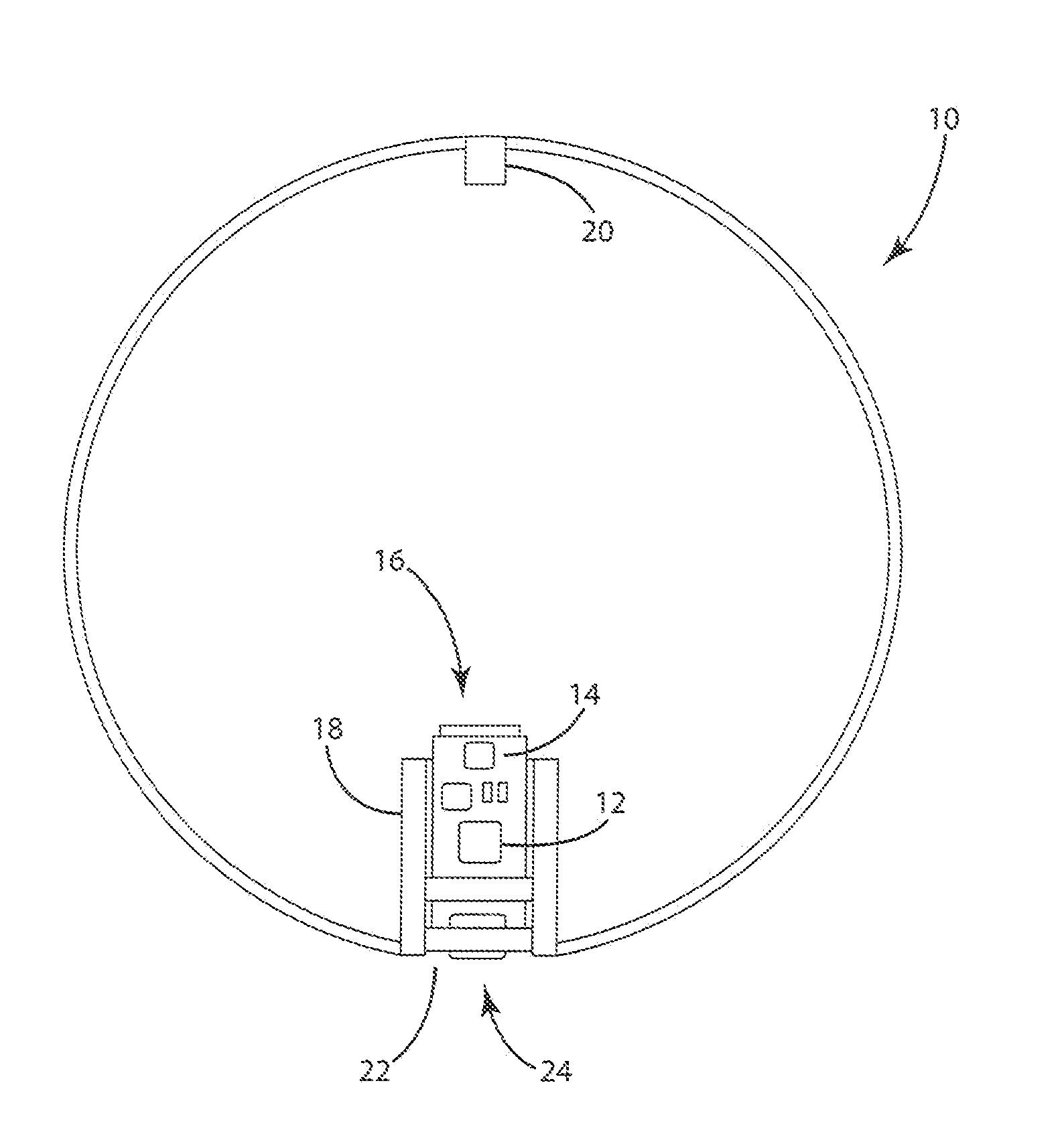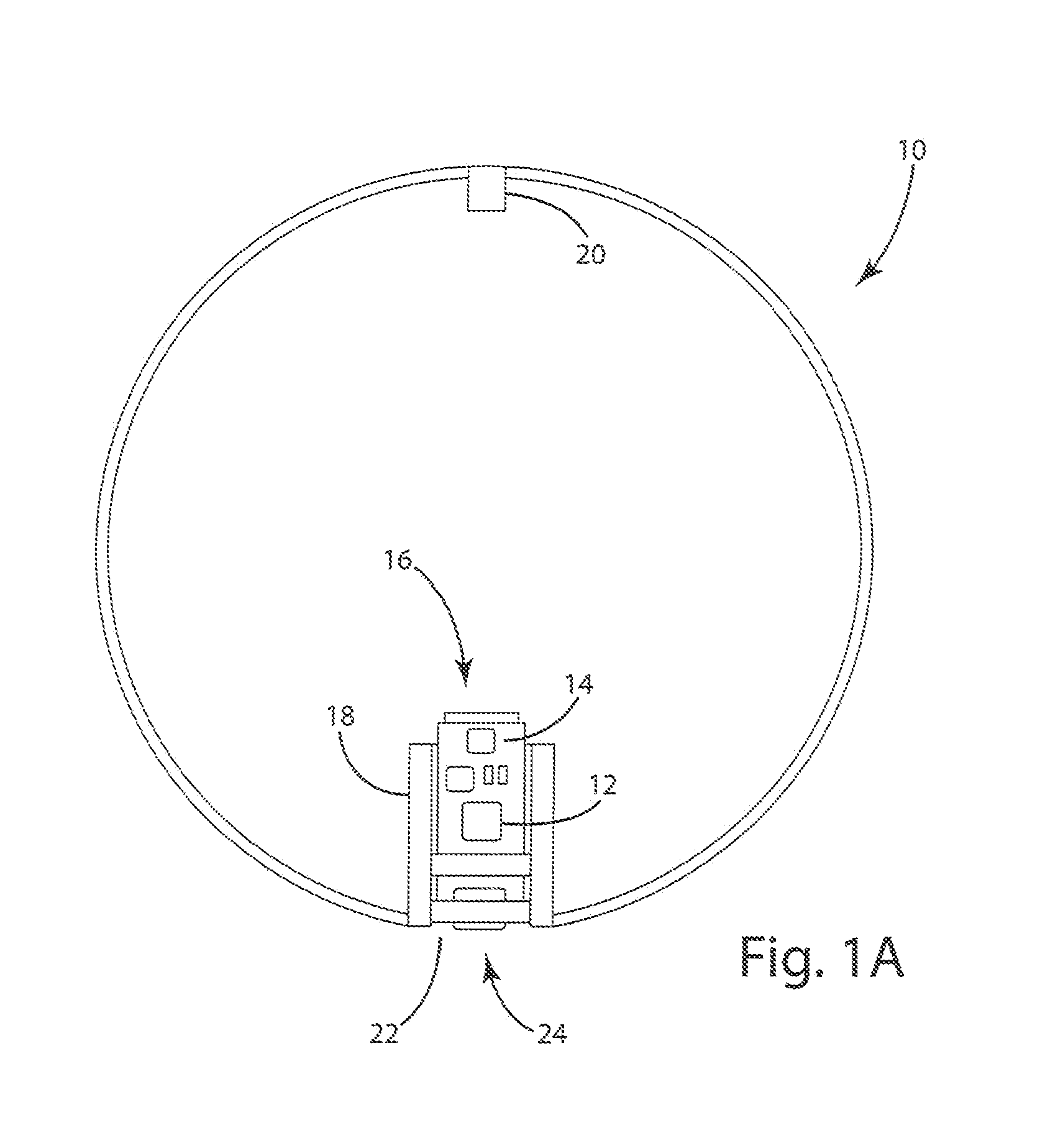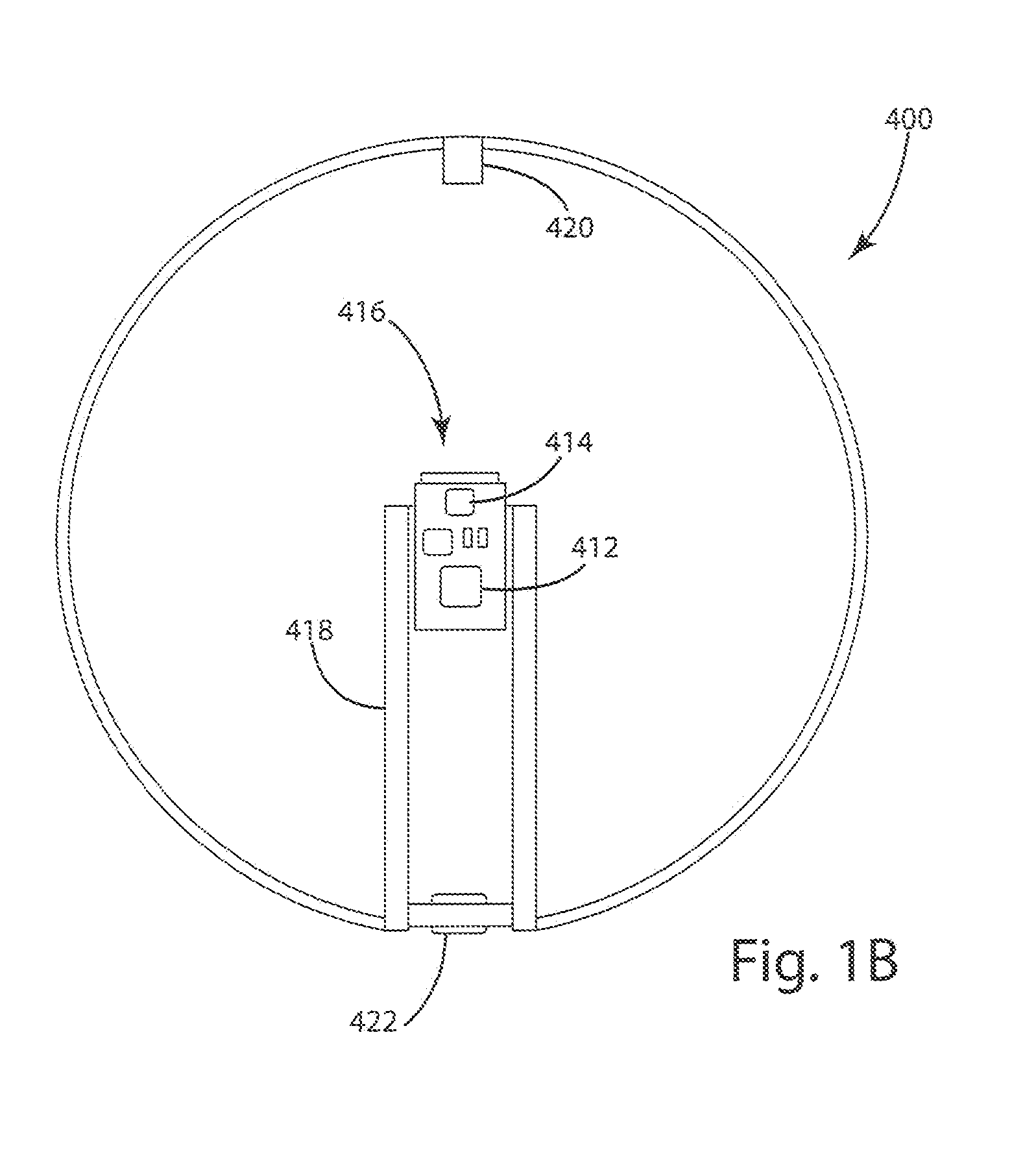Teaching system including sensor aided ball
- Summary
- Abstract
- Description
- Claims
- Application Information
AI Technical Summary
Benefits of technology
Problems solved by technology
Method used
Image
Examples
example experiments
[0073]Example Experiment 1—Gravity. The ball can be dropped and measurements made at the beginning, during the fall, and at the end. The acceleration, velocity, and position can be plotted to show how the ball begins to accelerate at a constant rate when dropped. The linear relationship with velocity can be shown, followed by the squared relationship with position. Through the user interface of the external device, a user selects the experiment corresponding to gravity measurement. The device communicates instructions to the controller associated with the sensor ball and sets the accelerometer(s) in the sensor ball to initiate data collection upon detection of a start trigger, such as detecting a free fall (i.e., detecting acceleration of 0.1 g). The sensor ball may then be dropped from a height and let it hit the ground or catch it. When dropped the starting trigger occurs. When an acceleration above the stop magnitude is measured due to catching the ball or bounding it, the data c...
PUM
 Login to View More
Login to View More Abstract
Description
Claims
Application Information
 Login to View More
Login to View More - R&D
- Intellectual Property
- Life Sciences
- Materials
- Tech Scout
- Unparalleled Data Quality
- Higher Quality Content
- 60% Fewer Hallucinations
Browse by: Latest US Patents, China's latest patents, Technical Efficacy Thesaurus, Application Domain, Technology Topic, Popular Technical Reports.
© 2025 PatSnap. All rights reserved.Legal|Privacy policy|Modern Slavery Act Transparency Statement|Sitemap|About US| Contact US: help@patsnap.com



